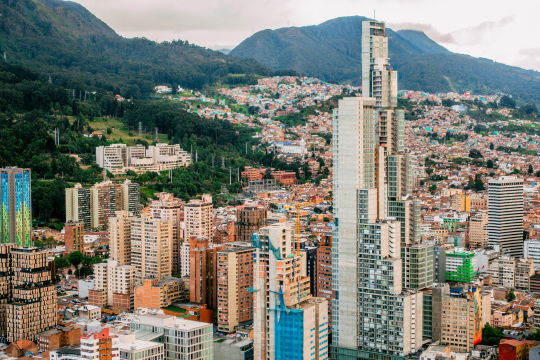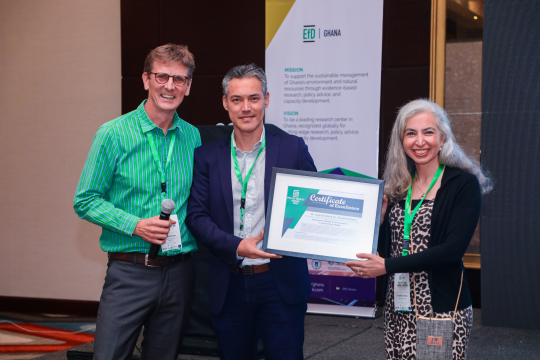Bogotá, the capital of Colombia, suffers from heavy air pollution, EfD researchers have studied alternative solutions to evaluate what interventions are most effective. The result of their work is now guiding policies and actions to improve air quality.
The problems with air pollution vary between different sections of the city and are the worst in the southwest of Bogotá, an area with a lot of industries, heavy traffic, and unpaved roads. In addition, poverty and social problems are prevalent in this part of the city.
Air pollution can cause heart- and circulatory problems as well as respiratory diseases. When it comes to small particles, there is no safe level, which underlines the importance of keeping it as low as possible.
EfD researchers Jorge Bonilla and Claudia Aravena conducted a study together with Ricardo Morales from the Engineering Department at Universidad de los Andes. They compared the impact of three different policies – paving roads, fuel substitution in the industry, and renovation of the diesel vehicle fleet – on air quality in Bogotá.
Worst air pollution in poor areas
“Tackling air pollution, measured as particular matter concentration, must be an important goal in cities such as Bogota, said Jorge Bonilla. “We have found that communities suffering from the highest levels of social and economic inequalities are also those that suffer the most from air pollution. Therefore, the study of air pollution must be done using a multidimensional approach, which includes more dimensions of inequality.”
The results from the study were a bit surprising. The researchers found that paving the streets was the most efficient policy to reduce air pollution in Bogota compared to fuel substitution from carbon to gas in the industry, and renovation of vehicles to EURO VI technology. The problem with streets that are not paved is that airflow and traffic raise dust that carries particular matter and creates an air pollution problem. This means that paving the streets in this zone will increase the well-being of people who live in, work, and transit through that zone.
The researchers presented the results of this study in a workshop with many influential stakeholders such as representatives from the Secretary of Environment, Secretary of Mobility, Institute of Urban Development of Bogota, and the Citizenship Board for Air Quality in Bogota (in Spanish “MECAB”, Mesa de calidad del aire del Bogotá). They have also produced a policy brief and a film on the topic.
Paving roads is not sufficient
“Their work has been very important input for one of our most innovative approaches: for the first time, the Environment Secretariat is investing in specific road improvement projects,” said Carolina Urrutia Vásquez, District Secretary for the Environment in the Mayor’s Office of Bogotá.” “We used their work to include socioeconomic criteria to decide which roads, particularly those around schools, childcare facilities, and facilities that offer services to the elderly, would be selected for our investments.”
Paving roads is of course not sufficient to solve problems with air pollution, even though this turned out to be the most effective measure in this particular context. Air pollution needs to be addressed with many different actions.
Their paper Assessing Multiple Inequalities and Air Pollution Abatement Policies was published in Environmental and Resource Economics. The research has not only influenced the paving of roads but also the development of so-called ZUMAs – Zonas por un major aire, that is, better air zones.
“Their work has been central to the development of Bogota´s ZUMA policy, which was included in the city's Master or Land Use Plan in 2021, and will guide the city's planning for the next 12 years,” said Carolina Urrutia Vásquez.
ZUMAs are a tool to focus the city's interventions in the neighborhoods with the poorest air quality, ensuring that all interventions, including public spaces, road improvement, the selection of schools and childcare facilities, switching to cleaner sources of energy and green spaces are planned in a way that contributes to improving air quality. Eventually, ZUMAs will become the city's low-emission zones. Instead of using the cookie-cutter approach and establishing these zones around the most congested areas, Bogotá chose to establish ZUMAs in areas where air quality problems from multiple sources have the largest impact on the most vulnerable population.

